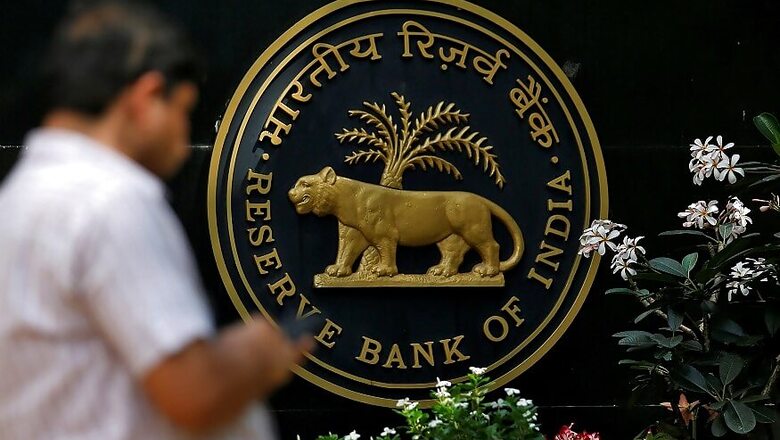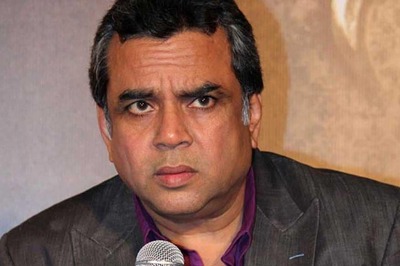
views
New Delhi: One of the major flashpoints in the recent ugly public spat between the government and the Reserve Bank of India (RBI) has been easing lending restrictions on some of the weak public sector banks. The RBI included 11 of the 21 public sector banks under a mechanism called the revised Prompt Corrective Action (PCA) earlier this year and this irked the government no end.
The recent tug of war is over the government’s contention that easing lending restrictions on some of these banks will help ease systemic liquidity crunch versus the RBI contention that continued restrictions will help these banks turn stronger in the long run.
The government has been citing improved performance of some banks to seek relaxation in lending restrictions. Initially, the RBI was reluctant to even consider such a proposal, but in the last meeting of its board of directors on November 19, the bank has decided that this matter may be examined by the Board for Financial Supervision (BFS), a committee comprising exclusively of RBI people with no government representation. Now, the government has begun saying it hopes 3-4 public sector banks are released from the clutches of the PCA.
Of the 21 public sector banks functioning in India, the 11 under the PCA framework are Allahabad Bank, United Bank of India, Corporation Bank, IDBI Bank, UCO Bank, Bank of India, Central Bank of India, Indian Overseas Bank, Oriental Bank of Commerce, Dena Bank and Bank of Maharashtra. The PCA framework kicks in when banks breach any of these regulatory parameters—capital to risk weighted assets ratio, net non-performing assets (NPA) and return on assets (RoA).
Under PCA, banks face restrictions on distributing dividends, remitting profits and even on accepting certain kinds of deposits. Besides, there are restrictions on the expansion of branch network and the lenders need to maintain higher provisions, along with caps on management compensation and directors’ fees.
The entire thrust of the current PCA framework is to prevent further capital erosion and to strengthen them to the point of resilience so that they can, as soon as possible, restart their normal operations.
So why did the RBI devise the PCA framework in the first place? Without PCA imposition, some banks would have incurred even higher losses and required even more of taxpayer money for recapitalisation than others, contended RBI deputy governor Viral Acharya in a public lecture on November 14.
“Imposition of PCA can, thus, be seen as first, stabilising the banks at risk and then, undertaking the deeper bank reforms needed for long-term viability of the business model of these banks. It is important, therefore, that the PCA framework to deal with financially weak banks is persisted with. Any slackening of the approach in the midst of required course action is an all too familiar and ultimately harmful habit that we must eschew,” Acharya said.
What he is pointing out is the necessity of the bitter PCA pill if the government wants to prevent itself from throwing more of the taxpayers’ money at these stressed banks. Basically, allowing some banks out of PCA framework could well mean more of the taxes you and me pay will be used to prop up these weak banks, and where is the sense in that? Besides, why should short term liquidity concerns prompt RBI to ignore long term risks in allowing weak PSU banks to lend recklessly?
A look at how PCA has impacted the public sector banks till now: According to data collated by Kotak Mutual Fund, the public sector PCA banks have seen their market share in advances decline from 23% in FY16 to 17% in FY18, with majority of the lost market share being picked up private sector banks. Put simply, this means till 2015-16, when these banks were continuing to do business as usual, they accounted for a fourth of all advances but by March this year, their share in total advances fell to almost a sixth.
During the same time period, those public sector banks which were not put under PCA saw their share in advances rise, from 45% t 46.1%. It is obvious that the private banks made most of the lending restrictions on PCA banks since their share in advances jumped from 24% to 29.5% in the same two-year period.
The Kotak data further show that these PCA banks have also seen a massive decline in deposits – from accounting for more than fourth of all deposits, these banks now account for less than a fifth.
Who has gained from restrictions imposed on public sector banks? The private ones, which have seen their share of deposits rise from almost a fifth of the market to over a fourth of the market between 2015-16 and 2017-18. This decline in deposits with PSU banks under the PCA framework is what has been causing the overall credit squeeze, leading the government’s drive to get some banks out of lending restrictions.
In his speech, Acharya explained at length why the PSU PCA banks face lending restrictions (there is no bar on retail deposit taking), how this has not impacted the overall banking sector lending, that there continues to be healthy growth in credit flow from the banking sector as a whole and how the implementation of PCA norms is already helping stressed banks.
So is the RBI right or is the government’s insistence at relaxing norms a correct approach? Acharya not only spoke strongly in favour of the efficacy of the revised PCA framework, he also explained in detail how restrictions have already begun showing positive results. An important objective of the PCA is to limit further losses and prevent erosion of bank capital, thereby setting the stage for structural interventions to be implemented.
Acharya acknowledged that advances by these banks are in the negative territory now, adding that this was the intended purpose, “the required medicine to prevent further haemorrhaging”.
He also rubbished the suggestion that imposition of the PCA has starved the Indian economy of credit, saying “There is little factual basis for this assertion, either for the overall economy or at sectoral level…..the reduction in lending at PCA banks is being more than offset by credit growth at healthier banks. This is indeed what one wants – efficient reallocation of credit for the real economy with a financially stable distribution of risks across bank balance-sheets. Indeed, the funding for the economy as a whole has become diversified over this period, also due to the growth of capital markets.”
Responding to calls for more lending by PCA banks to large industries, Acharya said many of these industries were heavily indebted to start with and were anyway going through a deleveraging process under the IBC. So according to the RBI, the bitter pill being administered to PCA banks is working not just for these banks but also benefiting the entire banking sector as also you and me, the Indian taxpayer. The government may do well to heed the RBI on this matter.
(The author is a senior journalist. Views are personal.)


















Comments
0 comment